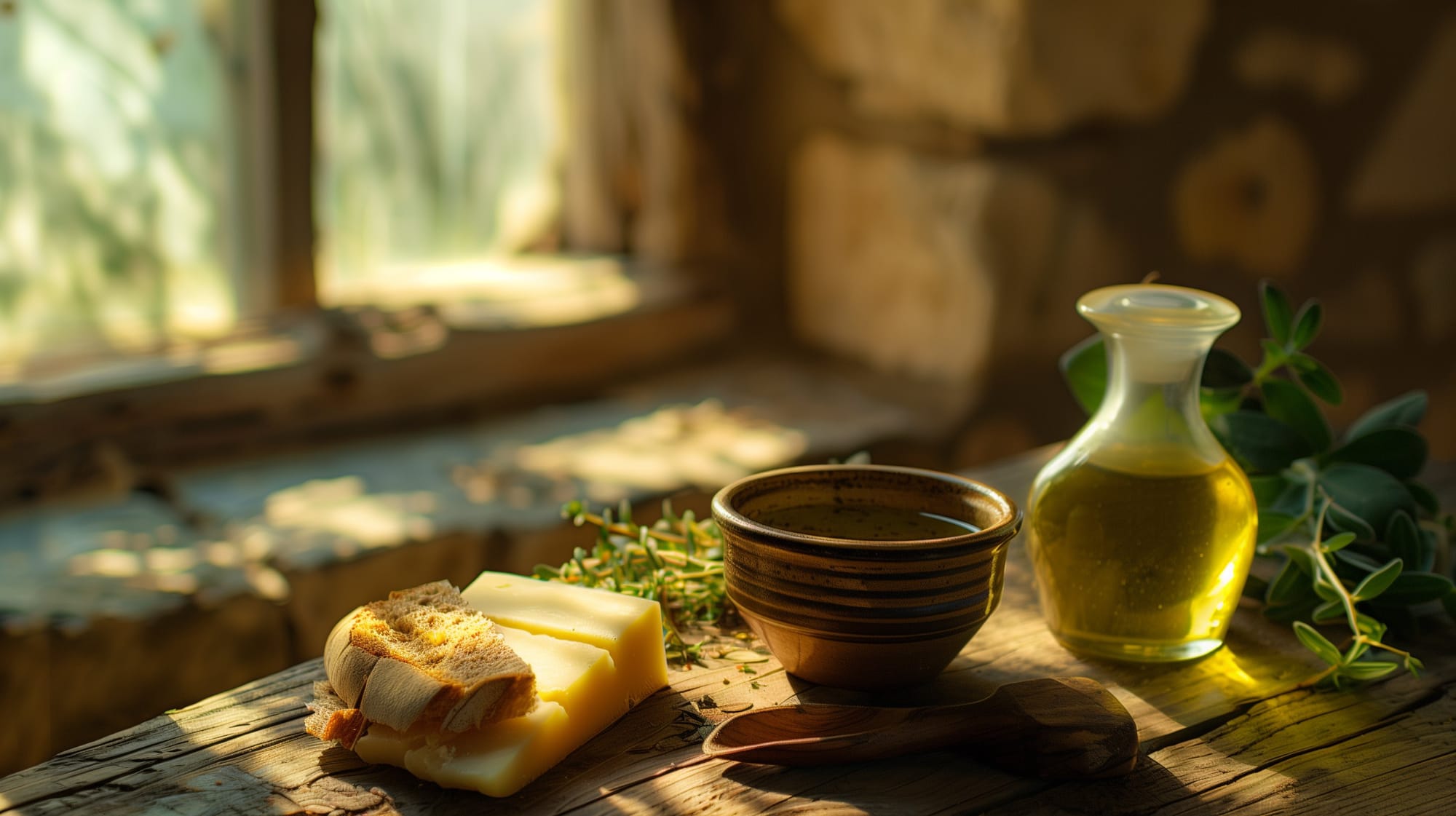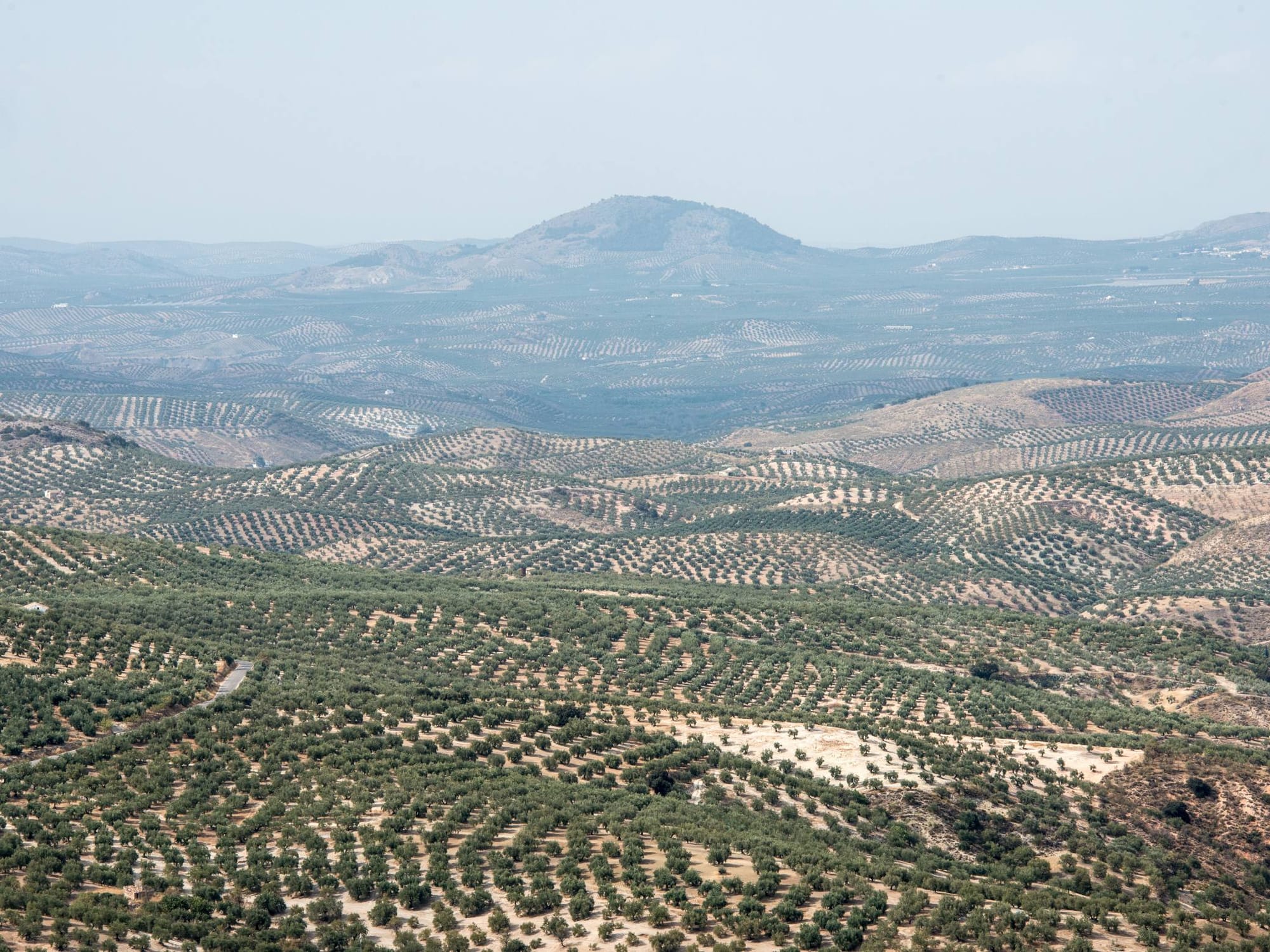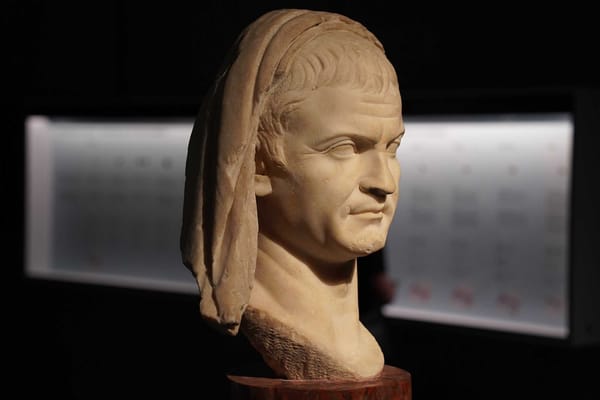Olive Oil in the Roman Empire: Romans and their Liquid Gold
Olive oil was a fundamental aspect of the Roman diet and was transported everywhere in the Empire.

Olive oil was a staple in ancient Roman society and played a significant role in their daily life, economy, and culture.
Historian and Roman analyst Penetrello has posited that the first olive tree in Italy was planted during the reign of Lucius Tarquinius Priscus, the Elder, around 616 to 578 B.C., possibly introduced from Tripoli or Gaes in Tunisia. Following this introduction, the Romans actively promoted and spread olive tree cultivation throughout the territories they conquered. Whether or not this initial planting is historically accurate, it is clear that in regions where olive trees already existed, Roman influence significantly boosted the cultivation's prominence and development.
How was olive oil produced in the Roman Empire
Olive oil production in the Roman Empire was a well-established industry by the first century BC. The Romans inherited their knowledge of olive cultivation and oil production from the Greeks and Etruscans, further refining these techniques to enhance the quality and quantity of the oil produced.
The Romans significantly advanced the cultivation and transportation techniques for olive oil, transforming it into the renowned commodity it is today. They extensively consumed olives and olive oil from the Baetica region of Hispania (now Andalusia), which was highly prized throughout the Empire for its superior quality. Records suggest that during this era, Hispania exported over 30 million vessels of olive oil, many of which were shipped directly to Rome.
The discovery of many of these transport vessels occurred at the end of the 19th century when Heinrich Dressel, an Italian-Prussian scientist, found them buried in a Roman hill. His research revealed that ancient residents had disposed of the used Baetica vessels along the left bank of the River Tiber. Over time, these fragments accumulated, along with soil, to form what is now known as the Testaccio hill.
The Romans transformed olive oil production into a vast industry, a legacy that persists to this day. As you travel through Andalucia, you will encounter endless stretches of olive groves, a testament to the enduring importance of this crop.

Andalucia was historically one of the major sources of olive oil for Rome, as well as for regions such as Britannia and Germania. The olive oil that fueled the Roman soldiers often came from the olive trees of Spain's Castellón Province.
Today, in Castellón Province, traces of Roman heritage are visible throughout the landscape. Portions of the ancient Vía Augusta, the longest road across the Iberian Peninsula during the Roman era, are still preserved. This historic route is dotted with remnants of old bridges, arches, and villas. More than the excavated grand homes, mills, or the mile markers that once guided Roman travellers, it is the ancient olive trees, some over 2,000 years old, that stand as the most profound testimony to the region's deep historical roots.
Lucius Junius Moderatus Columella, a native of Cadiz born in the first century AD, noted in his book "On Agriculture" that olive trees planted on the slopes of Italy and Baetica produced the finest oils.
Despite these vulnerabilities, the cultivation of olive trees can lead to significant prosperity, especially when there is a strong demand for the product. Historically, the demand for olive oil was immense within the Roman Empire, and it continues to be sought after globally. According to experts in southern Spain, the Romans initiated this extensive cultivation of olive trees to meet their substantial needs for olive oil. Spain's ideal climate and expansive land area made it better suited for olive cultivation than southern Italy, helping to foster the growth of this industry.
“There are two liquids that are specially agreeable to the human body, wine inside and oil outside, both of them the most excellent of all the products of the tree class, but oil an absolute necessity, nor has man’s life been slothful in expending labour upon it.”
Pliny the Elder, Naturalis Historia
The Ancient Roman olive oil industry
Olive oil rapidly evolved into a significant industry, enriching many locals in Spain. Consider the array of trades it involved—not just the growers, but also those who operated the presses, the artisans who crafted the amphorae, and the transporters who moved the oil from the presses to the ports. Additionally, there were ship owners who ferried the amphorae to Rome and numerous intermediaries at each stage.
In Rome, olive oil was utilized in a myriad of ways. It was a staple in cooking, featuring in nearly every recipe from the ancient Roman cookbook of Apicius. It also served as fuel for the myriad of small oil lamps throughout the city.
At the Roman baths, olive oil was essential for personal hygiene. Patrons would bring their strigil and a container of olive oil, using the oil to cleanse their skin of sweat and dirt. The covered their bodies with olive oil and then scrape it off with the strigil.

This practice highlights how integral olive oil was to daily Roman life, impacting various sectors of the economy and culture.
Illustration: Midjourney
The extensive demand for olive oil meant that Rome could not produce enough internally, prompting the empire to continually expand its territory in search of new sources. The Roman province of Hispania, now known as modern-day Spain, became a crucial supplier of olive oil to the empire. Remarkably, some olive trees from the Roman era are still alive and producing olives today, two millennia later.
In Rome, the historical importation of olive oil has left a lasting mark on the landscape. To the south of the contemporary city center lies the artificial hill of Testaccio, which did not exist when Rome was first established. Testaccio functioned as the city’s gateway, where ships navigating the River Tiber would bring goods from across the Mediterranean. Here, cargo was unloaded and either distributed overland or transferred to river vessels.
A significant portion of this cargo was olive oil, transported in ceramic amphorae. Due to the slight porosity of ceramic, these containers couldn't be reused for oil, as residual oil would spoil any new contents. Consequently, these used amphorae accumulated in a massive landfill. By around 140 CE, this accumulation had formed Mount Testaccio, which now rises approximately 115 feet above the surrounding area. Presently, the hill is a unique feature of the urban landscape, with restaurants and nightclubs integrated into its slopes, where the ancient amphorae are still visible.
Roman technique for the extraction of olive oil
Roman olive oil production and extraction methods remained largely the same until the early twentieth century. In ancient Rome, olives were crushed using a trapetum, a large stone mortar with one or two vertical millstones rotating around a central axis. Alternatively, a mola olearia was used, which consisted of a fixed circular base with the arm of a wheel millstone attached to a central axis. The gap between the millstone and the base was adjustable to ensure olive pits were not crushed.
The resulting olive paste was spread onto vegetable fiber disks, known as fiscula, which were then layered and pressed using a torcular. These presses, operated by levers, winches, or screws, had pressing surfaces made of stone or small clay bricks. Around the edges, a channel collected the oil-water mixture, which flowed into a container. This mixture was then transferred to a wide-mouth earthenware jar where oil separation occurred as the oil floated above the water.
To grasp the significance of olive oil in Roman culture, consider that around the year 212 AD, following the death of Emperor Septimius Severus, Rome had stockpiles of olive oil, primarily from Baetica and North Africa, sufficient to sustain the city for up to five years. An essential aspect of this storage was the use of ancient amphoras, which were made of clay and perfectly sealed. These containers protected the oil from air exposure, blocked light, and maintained low temperatures, thereby preserving the oil's original qualities.

Classification of Olive Oil in Ancient Rome
The value and usage of olive oil in ancient Rome varied by its quality, and the Romans recognized five distinct categories:
Oleum ex albis ulivis: This was the highest quality oil, made from unripe olives.
Oleum viride: Also highly valued, this oil was extracted from olives that were partly green and partly ripe.
Oleum maturum: Derived from fully ripe olives, this oil was of lower quality.
Oleum caducum: A lesser quality oil produced from olives that had fallen to the ground due to over-ripeness.
Oleum cibarium: The lowest quality oil, made from worm-infested olives, was used for non-dietary purposes or given to slaves.
These classifications demonstrate the sophisticated understanding the Romans had regarding olive oil, reflecting its importance in their culinary and economic practices.
Romans loved their olive oil. Proof of that is that remains of Herculaneum and analysis of the bones of the victims of Vesuvius shows that olive oil was almost 12% of all daily calories consumed. The discovery corroborates historical records which suggest that the typical Roman used about 20 liters of oil annually, highlighting olive oil as a crucial source of fat in their diet.





About the Roman Empire Times
See all the latest news for the Roman Empire, ancient Roman historical facts, anecdotes from Roman Times and stories from the Empire at romanempiretimes.com. Contact our newsroom to report an update or send your story, photos and videos. Follow RET on Google News, Flipboard and subscribe here to our daily email.
Follow the Roman Empire Times on social media: